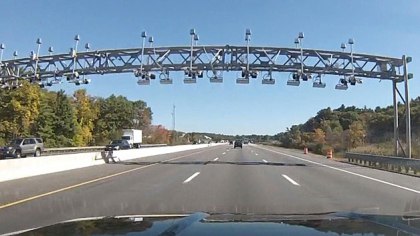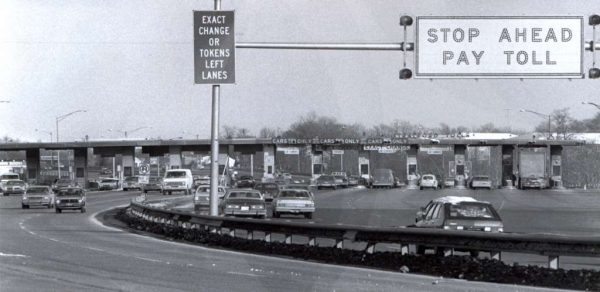Accrediting Organization to Decide Fate of Plan to Merge 12 Community Colleges into One
/Plans to merge Connecticut’s 12 community colleges into a single institution, expected to be called the Community College of Connecticut, are now being reviewed by the region’s accrediting body, the New England Association of Schools and Colleges, known best by the acronym, NEASC. Back in August, after first learning about the Connecticut merger proposal in an 18-page outline provided by Connecticut officials, NEASC had questions, and many of them. In a detailed four-page letter to the leadership of the Connecticut State Colleges & Universities (CSCU), NEASC indicated they had yet to receive “sufficient information to be confident CSCU’s process will result in arrangements that are compliant with the Standards for Accreditation.” The letter from David Angel, Chair of NEASC's Commission on Institutions of Higher Education, was shared with the leadership of all the colleges and universities in the state's public CSCU system.
NEASC officials met three times with Connecticut officials last year, the Connecticut Post reported recently. Another meeting in Connecticut is planned for this month.
The President/Chief Executive Officer at NEASC, since 2011, is Cameron Staples, a former Connecticut state legislator and former chair of the legislature’s Education Committee and Finance, Revenue and Bonding Committee. In 2010, he briefly sought the Democratic nomination for Attorney General. 
The letter from NEASC also indicated that “the materials submitted to date have been very clear on the financial reasons for the proposed change but less clear on a rationale tied more directly to the mission of the colleges.” NEASC noted that the proposal stated plans to retain the “unique mission” and “local community connection” of each of the 12 institutions after the merger, but indicated the need for “further information about how this will be accomplished through the proposed merger.”
 The consolidation plan was subsequently approved by the Board of Regents of CSCU in December, with only one member of the Board abstaining and others unanimously supporting the plan, developed to save money across the system by eliminating staff positions, many said to be duplicative, that would not adversely impact students. Student and faculty groups at the campuses have raised questions about the ultimate effectiveness of the plan, or have opposed it outright.
The consolidation plan was subsequently approved by the Board of Regents of CSCU in December, with only one member of the Board abstaining and others unanimously supporting the plan, developed to save money across the system by eliminating staff positions, many said to be duplicative, that would not adversely impact students. Student and faculty groups at the campuses have raised questions about the ultimate effectiveness of the plan, or have opposed it outright.
Following approval by the Regents, a more detailed plan was submitted to NEASC seeking approval from the accrediting organization. If NEASC accreditation is obtained, Connecticut officials hope to have initial implementation by July 1 of this year and the new structure fully in place by July 1 of next year. That is predicated on receiving NEASC approval by June; published reports indicate that NEASC officials anticipate consideration at the organization’s board meeting this spring.
NEASC’s Barbara Brittingham, president of the Commission, recently told the CT Post that Connecticut’s timeline was “ambitious,” particularly for a “substantive change” that involved 12 colleges. The newspaper also reported that several Regents committees are at work looking at 1) integrating new positions and selecting people to fill those jobs, 2) aligning 12 academic course catalogs and 3) fine-tuning the projected savings of the new system.
Since December’s Regents approval, in media interviews and public explanations, details of what’s planned are being highlighted, while the system awaits NEASC approval. The merger plan was initially proposed last April as an “expedient solution” in reaction to state funding cuts to the colleges and an ongoing “structural deficit” resulting from operational costs outpacing revenue.
The plan calls for 12 college president positions to be eliminated, with a new structure to take its place that would include a creation of a “vice chancellor” position to lead the new 12-campus community college system, along with three new regional president positions that would report to the vice chancellor, each with presumably jurisdiction over four college campuses. Each of those 12 campuses would be led by a campus vice president.
The Regents plans would consolidate college functions in six areas: Information Technology, Human Resources, Purchasing, Financial Aid Services, Institutional Research and Assessment, and Facilities Management. 
The plan anticipates saving $28 million a year by eliminating college presidents, a process that has already begun, as well as budget staff and other administrators at each institution and creating a centralized staff to run the public colleges. Another plan aimed at saving an additional $13 million by reorganizing how financial aid, enrollment management and other services are delivered is also part of the proposal.
The proposal would create one of the nation’s largest community colleges with about more than 53,000 students. Among the largest currently are Miami Dade College with 174,000 students; Lone Star College in Houston, with 90,000; Northern Virginia Community College, in Springfield, VA, with 76,000 students; Broward College in Fort Lauderdale, with 67,000 students, and Houston Community College with 63,000 students.
Officials note that Connecticut’s higher education system has changed previously, including when the four regional state universities and 12 community colleges, along with the on-line Charter Oak State College, were brought together under the newly established Board of Regents umbrella six years ago, and when the state’s technical colleges and community colleges merged in the 1990’s.
NEASC is the regional accreditation agency for colleges and universities in the six New England states: Connecticut, Maine, Massachusetts, New Hampshire, Rhode Island, and Vermont, recognized by the U.S. Secretary of Education. NEASC accreditation is a system of accountability that is ongoing, voluntary, and comprehensive in scope. It is based on standards which are developed and regularly reviewed by the members and which define the characteristics of good schools and colleges, according to the organization’s website.



 Compared with other states, the percentage of women in Connecticut’s legislature has been dropping, in real numbers and as compared with other states. In 2015, the percentage was 28.3 percent; in 2013 it was 29.4 percent; in 2011 Connecticut’s legislature was 29.9 percent women. In 2009, Connecticut’s legislature included 31.6 percent women, which was the seventh highest in the nation.
Compared with other states, the percentage of women in Connecticut’s legislature has been dropping, in real numbers and as compared with other states. In 2015, the percentage was 28.3 percent; in 2013 it was 29.4 percent; in 2011 Connecticut’s legislature was 29.9 percent women. In 2009, Connecticut’s legislature included 31.6 percent women, which was the seventh highest in the nation.
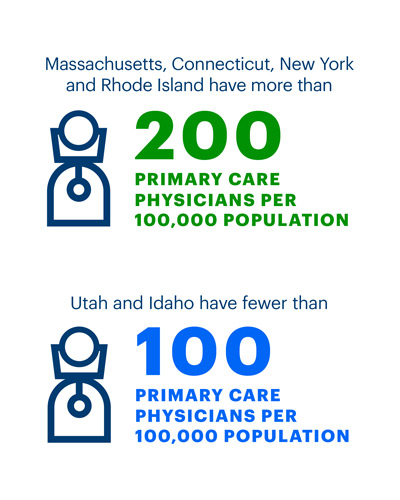 The model reflects that determinants of health directly influence health outcomes. A health outcomes category and four categories of health determinants are included in the model: behaviors, community & environment, policy and clinical care.
The model reflects that determinants of health directly influence health outcomes. A health outcomes category and four categories of health determinants are included in the model: behaviors, community & environment, policy and clinical care.

 The article points out that “the connection between climate change and hurricanes has become hard for anyone to ignore.”
The article points out that “the connection between climate change and hurricanes has become hard for anyone to ignore.”

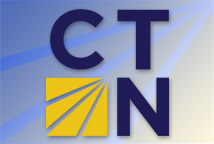 CPAN’s most recent contact expired in September, was extended through October, and was on a day-by-day basis this week. The 33-person staff worked with an annual operating budget that was unexpectedly reduced by
CPAN’s most recent contact expired in September, was extended through October, and was on a day-by-day basis this week. The 33-person staff worked with an annual operating budget that was unexpectedly reduced by 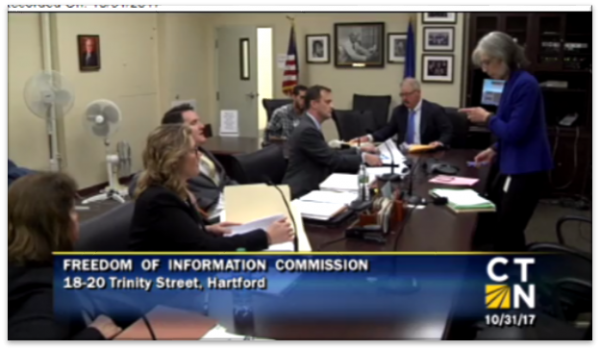
 Among the panelists will be former Senate President Pro Tempore Don Williams, former House Speaker James Amann, former Senate Minority Leader John McKinney, and former House Minority leader Lawrence Cafero. They will be joined by former House member Tim O’Brien, who served on the Government Administration and elections Committee, and Senate Co-Chair of that committee, Sen. Michael McLachlan.
Among the panelists will be former Senate President Pro Tempore Don Williams, former House Speaker James Amann, former Senate Minority Leader John McKinney, and former House Minority leader Lawrence Cafero. They will be joined by former House member Tim O’Brien, who served on the Government Administration and elections Committee, and Senate Co-Chair of that committee, Sen. Michael McLachlan. A week ago, in an op-ed
A week ago, in an op-ed  Flynn added that the law, passed in 2005, “allows candidates and officeholders to look out for the interests of all their constituents rather than being consumed with the needs of their major campaign contributors. It gives talented, motivated citizens who've never had the money or the connections traditionally required for success in politics a chance to seek and win public office with neither big money nor connections. Now, nearly 80 percent of all candidates for legislative and state offices use the program.” Qualifying candidates must raise $5,000 to $250,000 — depending whether they are seeking a statewide office or legislative seat — in $100 increments or less in order to receive a grant of public funds from the CEP.
Flynn added that the law, passed in 2005, “allows candidates and officeholders to look out for the interests of all their constituents rather than being consumed with the needs of their major campaign contributors. It gives talented, motivated citizens who've never had the money or the connections traditionally required for success in politics a chance to seek and win public office with neither big money nor connections. Now, nearly 80 percent of all candidates for legislative and state offices use the program.” Qualifying candidates must raise $5,000 to $250,000 — depending whether they are seeking a statewide office or legislative seat — in $100 increments or less in order to receive a grant of public funds from the CEP.

 t Hartford also looks forward to entering.
t Hartford also looks forward to entering.
 District teams identify one exemplary teacher from within their teaching populations. Each district nominee completes the state application in the ensuing months and submits it to the State Department of Education. Applications are distributed to members of a reading committee, and the results are tabulated to identify approximately fifteen semi-finalists.
District teams identify one exemplary teacher from within their teaching populations. Each district nominee completes the state application in the ensuing months and submits it to the State Department of Education. Applications are distributed to members of a reading committee, and the results are tabulated to identify approximately fifteen semi-finalists.



 The U.S. Census Bureau’s
The U.S. Census Bureau’s  ensus officials are necessary to obtain more accurate population and demographic counts. If those visits are reduced in order to cut costs, the accuracy of the census itself is likely to diminish, observers say. Connecticut, which does not have independent counts of its entire population, depends heavily on data derived from the U.S. Census for a host of policy and funding decisions.
ensus officials are necessary to obtain more accurate population and demographic counts. If those visits are reduced in order to cut costs, the accuracy of the census itself is likely to diminish, observers say. Connecticut, which does not have independent counts of its entire population, depends heavily on data derived from the U.S. Census for a host of policy and funding decisions.